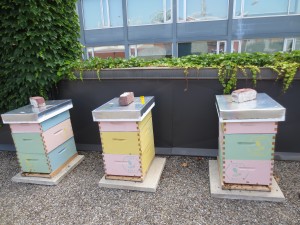
Bees build honeycomb from the bottom up, so the very first ‘box’ generally has a lot more activity than the box on top. People have the impression that if bees are around, they will swarm and/or sting you. The truth? They just do their own merry thing. Sure, there were a lot of bees flying around us, but they tend to keep to themselves, unless you flail your arms and agitate them. The key: no arm-flailing. In fact, they really paid us no mind at all.
It was the second apiary visit over at Earth Sciences that had us all up in arms. Dr. Sandy Smith, a professor in the Faculty of Forestry, joined us. We were adventurous enough to get down to the first layer/hive. This is what we found!!
When the guys lifted up the second layer from the first, a chunk of honey comb was dragged up as well, along with so many bees. Crazy, no? We were all blown away. It seems the bees were swarming, meaning that they are raising a new queen and preparing to start a new colony. When the queen is ready, she will fly away, taking many of the worker bees with her (up to 60% of the colony). B.E.E.S. wants to avoid that, so they will find a way to keep the colony at U of T.
This particular colony had already produced so much honey that Sandy was able to scrape some of the honeycomb away. Bonus! We all got a taste, which tasted similar to Linden honey. The taste and type of honey depends on which flowers a bee colony will pollinate. Apparently, the colony over at Trinity produces a much darker honey.
Why are bees so important? If, like me, you don’t really have a clue, this handy infographic put together by BeesFree is very useful. Take a peek! Long story made very short, without the pollinating action that bees undertake, we would be left with far fewer choice of fruits and vegetables. Most of the staples that you eat everyday would disappear. News of tremendous amounts of deaths of bees has been at the forefront of newscasts as of late, as per the following article by the CBC.
In the face of that terrible reality, U of T B.E.E.S has taken the reins on all things bee-related. The club hosts a variety of educational events and workshops, which include: hive building, hive installation, honey harvesting, swarming prevention, and the history of beekeeping among various others.
They also host various social events throughout the year such as film screenings, potluck BBQs, and pub nights. However, the club’s main attraction is a series of summer hive visits which run during the beekeeping season (May until early November). All visits and events are open to U of T students/faculty and community members. They provide you with the opportunity to get hands-on beekeeping experience, with a ready supply of suits and gloves. Hive visits are scheduled for every second Thursday.
My bee adventure was amazing, and nothing like what I expected. If you have a few moments to spare, take a stroll and connect with nature in a different way. I guarantee that you will bee pleasantly surprised.
- Aziza
Check out our Facebook Album of an Afternoon with B.E.E.S!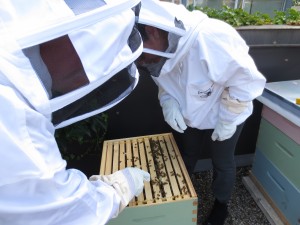
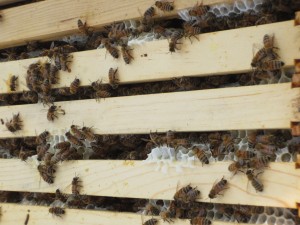
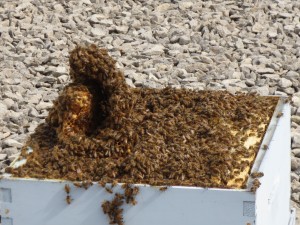
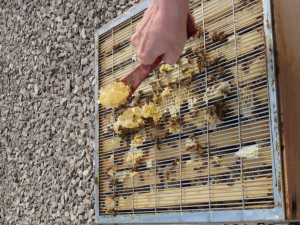
0 comments on “An Afternoon with B.E.E.S”